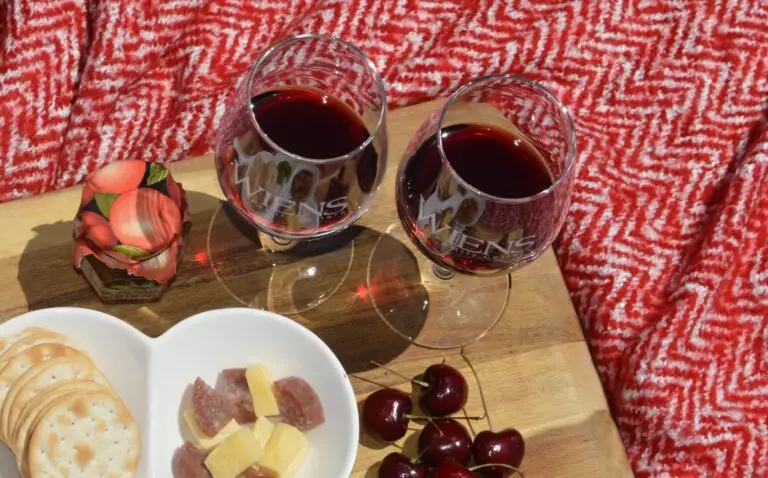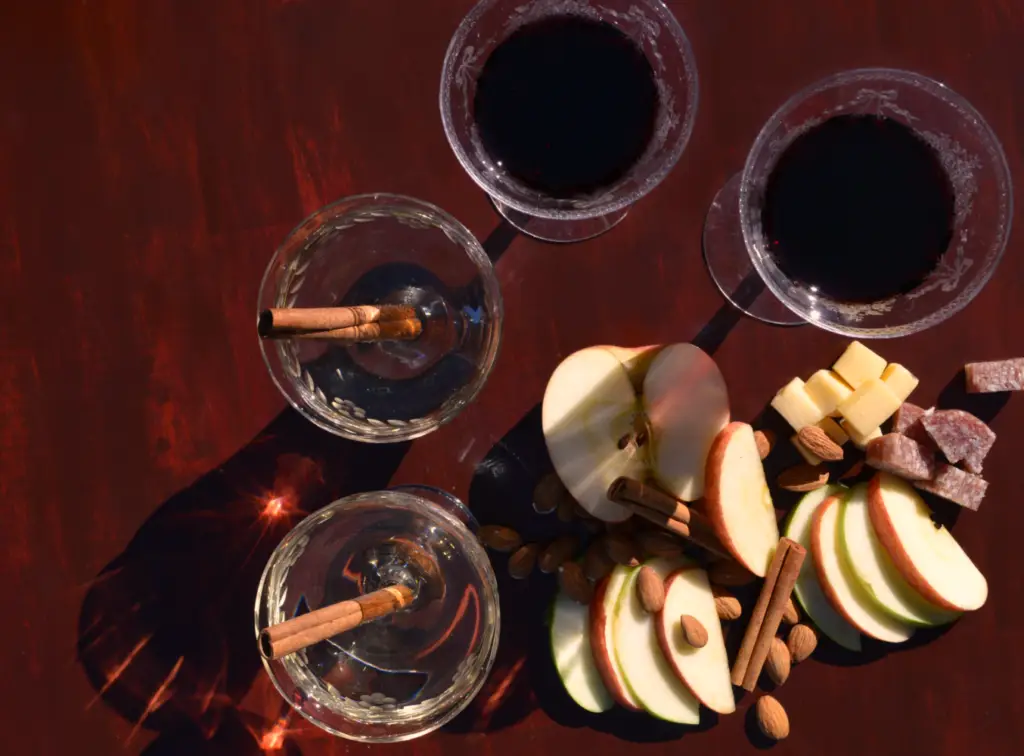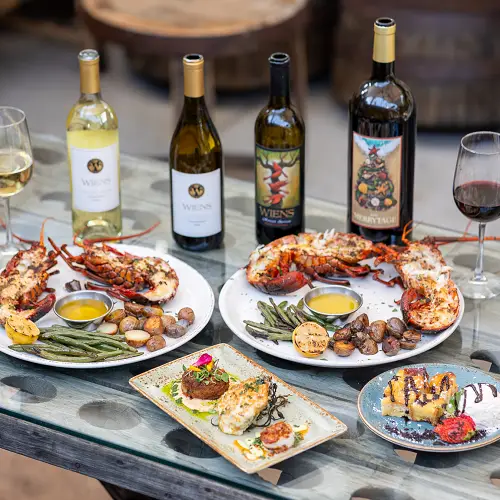The art of pairing wine with food transcends mere culinary practice, embodying a rich tapestry of flavors, cultures, and traditions that span the globe. This intricate dance between wine and cuisine is not just about enhancing the dining experience; it’s a form of expression, a way to bring out the best in both elements, creating a harmonious blend that celebrates the diversity of the world’s culinary heritage. Understanding the importance of local cuisines in wine pairing is essential, as it allows us to appreciate the subtleties and complexities that each region’s dishes and wines offer.
The Basics of Wine and Food Pairing
At its core, the principle of matching wine with food is based on the interplay of flavors, textures, and aromas. The goal is to achieve a balance where neither the wine nor the dish overwhelms the other, but rather, they complement and elevate each other’s qualities. This delicate balance is influenced by the weight and body of both the wine and the dish, the acidity and sweetness levels, and the intensity of flavors and aromas. Here are three basic principles to guide you through creating harmonious pairings that celebrate the art of dining:
Complement and Contrast:
- Complementing Flavors: Look for wines and dishes that share common flavors or aromatic profiles. A buttery Chardonnay, for example, beautifully complements a rich, creamy pasta dish by mirroring its lushness.
- Contrasting Pairings: Sometimes, opposites attract. Pairing a crisp, acidic wine like a Sauvignon Blanc with a fatty fish dish can cut through the richness, refreshing the palate with each sip.
Consider Weight and Body:
- The weight of both the wine and the food should be in harmony. Lighter dishes fare best with lighter wines; a delicate Pinot Grigio pairs well with a fresh salad. Conversely, hearty, robust dishes, such as a grilled steak, demand a fuller-bodied wine like a Cabernet Sauvignon to stand up to the dish’s intensity.
Balance Acidity and Sweetness:
- Acidity in Wine: A wine’s acidity can highlight the flavors of a dish and bring balance. For instance, the acidity in Riesling can complement the slight sweetness of spicy Asian cuisine, enhancing the flavors without overpowering.
- Sweetness Balance: For dishes with a sweet component, opt for a wine that is equally sweet or slightly sweeter to ensure the wine isn’t overpowered. A dessert featuring peaches would pair wonderfully with a sweet, aromatic Moscato.
By keeping these three principles in mind, you can navigate the vast world of wine and food pairings with confidence, finding joy in the discovery of flavors that together create a sum greater than their parts.
European Pairings: A Tradition of Excellence
Europe’s rich culinary and winemaking traditions provide a treasure trove of classic pairings that have stood the test of time. In France, the elegance of a Coq au Vin finds its match in the complexity of a Burgundy Pinot Noir. Italy’s robust pasta dishes, such as a Bolognese, are perfectly complemented by the boldness of a Chianti. Meanwhile, Spain’s vibrant tapas culture calls for the versatility of a Tempranillo or a refreshing Albariño. Each country’s regional specialties, from France’s Bouillabaisse to Italy’s Risotto al Barolo, offer unique opportunities to explore the synergy between local dishes and their ideal wine counterparts.
Pairings in the Americas: A Melting Pot of Flavors
North America’s diverse culinary landscape, from the hearty comfort foods of the United States to the vibrant flavors of Canadian cuisine, pairs beautifully with a wide array of wines. California’s Zinfandel, for instance, is a bold choice that stands up to the rich flavors of a classic barbecue. In South America, the culinary traditions are as varied as the continent’s geography, with dishes like Argentina’s Asado finding a perfect match in the country’s flagship Malbec, and Chile’s Seafood stews enhanced by the crispness of a Sauvignon Blanc from the same region.
Asian Fusion: Navigating Complex Flavors
Pairing wine with Asian cuisines presents unique challenges due to the diverse range of flavors, from the fiery spices of Thai dishes to the umami-rich Japanese cuisine. However, the rewards are equally compelling. A German Riesling, with its balance of sweetness and acidity, can tame the heat of spicy Sichuan dishes, while the delicate notes of a Pinot Gris complement the subtleties of Japanese sushi. Experimentation and an open palate are key to discovering successful pairings across Asia’s culinary spectrum.
Middle Eastern and African Inspirations
The aromatic spices and rich flavors of Middle Eastern cuisine open up new avenues for wine pairing, with dishes like Moroccan Tagine pairing wonderfully with the floral notes of a Gewürztraminer. African cuisine, with its robust stews and grilled meats, finds a harmonious match in the bold and fruity wines from South Africa’s Cape Winelands, such as a Shiraz or a Chenin Blanc, highlighting the continent’s growing wine industry.
Oceania’s Contributions
Australia and New Zealand bring their own unique flair to the world of wine and food pairing. Australian Shiraz, with its peppery notes, is a natural complement to the country’s barbecued meats, while New Zealand’s Sauvignon Blanc, with its crisp acidity, pairs beautifully with the fresh seafood that is abundant in the region. The use of indigenous ingredients in both countries’ cuisines further influences pairing choices, offering a distinct sense of place.
Seasonal and Local Pairings: A Taste of Temecula’s Bounty
Nestled within the scenic landscapes of Temecula Valley lies a rich tradition of seasonal and local pairings, where the region’s commitment to sustainability meets its celebration of agricultural diversity. Here, the intimate connection between land, vine, and table is not just practiced but cherished, offering a distinct taste of place that resonates with every sip and bite. Let’s embark on a gastronomic journey through the seasons in Temecula, exploring how each period’s harvest pairs beautifully with the valley’s exquisite wines.
Spring: A Symphony of Greens and Whites
- Vibrant Greens and Citrus: With spring’s arrival, the valley awakens to a bounty of fresh greens, citrus fruits, and early strawberries. These ingredients inspire light, refreshing dishes.
- Wine Pairings: A crisp Temecula Viognier or a fragrant Grenache Blanc complements citrusy salads and strawberry-infused creations, highlighting the wines’ balanced acidity and aromatic nuances.
Summer: The Warmth of Sun-kissed Pairings
- Seasonal Fruits and Vegetables: The warmer months bring an abundance of stone fruits, tomatoes, and peppers, perfect for adventurous and robust pairings.
- Wine Pairings: The region’s Rosés, with their bright acidity, pair delightfully with summer salads, while a light-bodied Sangiovese or Zinfandel accentuates the flavors of grilled peaches or fresh tomato gazpacho.
Autumn: A Harvest of Hearty Pairings
- Root Vegetables and Squashes: Autumn ushers in a harvest of root vegetables and squashes, inspiring dishes that embody the comfort and richness of the season.
- Wine Pairings: Fuller-bodied reds like a velvety Syrah or a complex Merlot elevate roasted vegetable medleys and risottos, marrying the depth of autumnal flavors with the wines’ spicy undertones.
Winter: Cozy Comforts and Bold Reds
- Warmth and Depth: Winter’s chill calls for dishes that provide warmth and depth, such as stews, roasts, and hearty pasta, celebrating the festive spirit.
- Wine Pairings: Robust wines like Temecula’s Cabernet Sauvignon or the spicy Mourvèdre complement these richer dishes, providing a comforting warmth that reflects the season’s coziness.
Embracing seasonal and local pairings in Temecula Valley fosters a deep connection to the region’s cycles of growth and renewal. It’s an invitation to experience the essence of Temecula through its seasonal bounty, each pairing weaving together the unique flavors and stories of the land. This celebration of seasonality not only elevates the dining experience but also honors the valley’s agricultural and viticultural heritage, ensuring its vibrancy for future generations. As we savor these pairings, we’re reminded of the beautiful tapestry of flavors that nature, nurtured by skilled hands, brings to our tables and palates.
Tips for Crafting Your Pairings
Crafting wine pairings, especially with wines from forgotten or lesser-known grape varieties, is an art form that encourages creativity and exploration. This journey into the uncharted territories of wine can transform an ordinary meal into an extraordinary culinary adventure. Here are some tips to guide you through the process of creating harmonious pairings that will delight your senses and expand your wine horizons.
Understand the Flavor Profiles
Begin with a basic understanding of the primary flavors and textures present in both the wine and the dish you plan to serve. For wines made from forgotten grapes, take the time to research and taste them independently, noting their characteristics such as acidity, tannins, fruitiness, and body. Similarly, consider the dominant flavors, aromas, and textures of your dish. Are they bold or subtle? Rich or light? Spicy or sweet? This initial analysis will form the foundation of your pairing strategy.
Seek Balance
The goal of any wine pairing is to achieve balance where the wine and food complement each other without one overpowering the other. With wines from forgotten grapes, which often possess unique and distinct profiles, look for ways to match their intensity with the dish. A rich, aromatic white made from an obscure varietal might pair beautifully with a creamy seafood pasta, while a light and fruity red could complement a dish with earthy flavors, such as a mushroom risotto.
Contrast vs. Complement
Decide whether you want the wine to contrast with or complement the food. Contrasting pairings create a balance by opposing flavors, such as pairing a sweet wine with a salty dish. Complementary pairings, on the other hand, echo similar flavors and textures, like a robust, spicy red with a hearty, meaty stew. Wines from forgotten grapes often offer a wide array of unique flavor notes, providing ample opportunities to experiment with both contrasting and complementary pairings.
Don’t Be Afraid to Experiment
The beauty of pairing with lesser-known wines lies in the freedom to experiment and discover new combinations. Use the traditional pairing rules as a guideline, but don’t be confined by them. Trust your palate and be open to trying unconventional pairings. A forgotten grape variety may just surprise you with its versatility and affinity for a wide range of cuisines.
Learn from Each Experience
Every pairing, whether successful or not, is a learning opportunity. Take notes on what worked and what didn’t, and don’t be discouraged by pairings that didn’t turn out as expected. Wine preferences are highly personal, and part of the fun is finding out which combinations resonate most with you and your guests.
Share Your Discoveries
One of the joys of exploring wines from forgotten grapes is sharing your discoveries with others. Whether it’s through hosting a themed dinner party, attending a wine tasting event, or simply enjoying a bottle with friends, discussing the pairings can offer new insights and perspectives. Sharing not only enriches the experience but also spreads the word about these unique wines, contributing to their revival and appreciation.
Embarking on the journey of pairing wines from forgotten grapes with local cuisines opens up a world of flavors, textures, and stories waiting to be explored. By following these tips and embracing a spirit of adventure, you’ll unlock the potential for truly memorable dining experiences that celebrate the diversity and richness of the world’s wine heritage.
A World of Pairing Possibilities
The global journey of wine and food pairing is an endless adventure, filled with the potential for discovery and innovation. As we explore the myriad ways local cuisines can be enhanced by thoughtfully chosen wines, we open ourselves up to a deeper appreciation of the cultural and geographical diversity that makes our world so rich. Whether you’re a seasoned sommelier or a curious foodie, the art of pairing invites us to expand our horizons, experiment with new flavors, and celebrate the universal joy of sharing a meal and a glass of wine.



